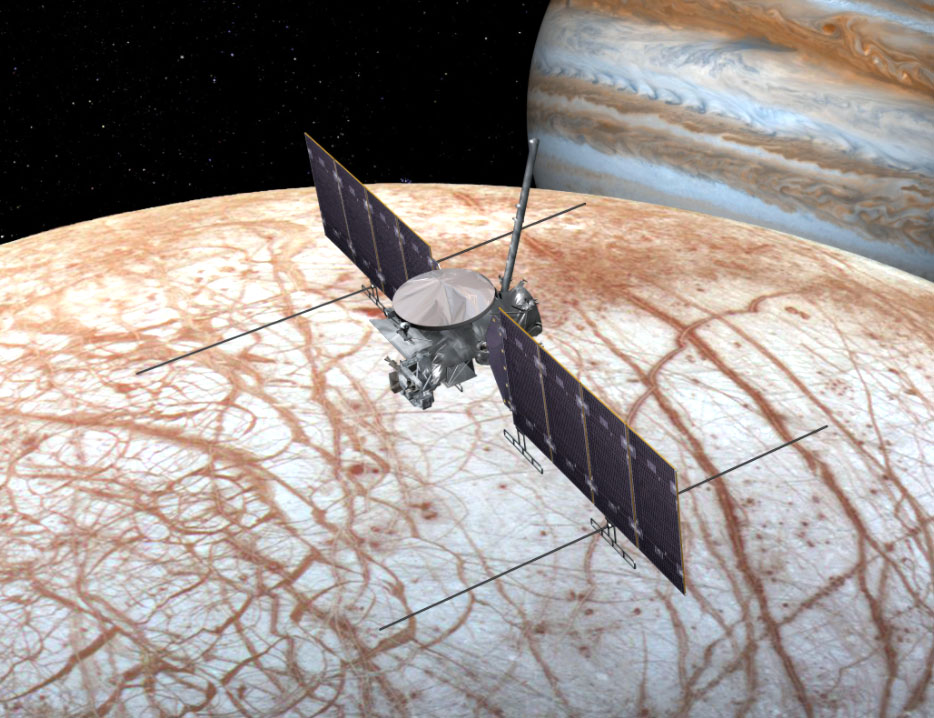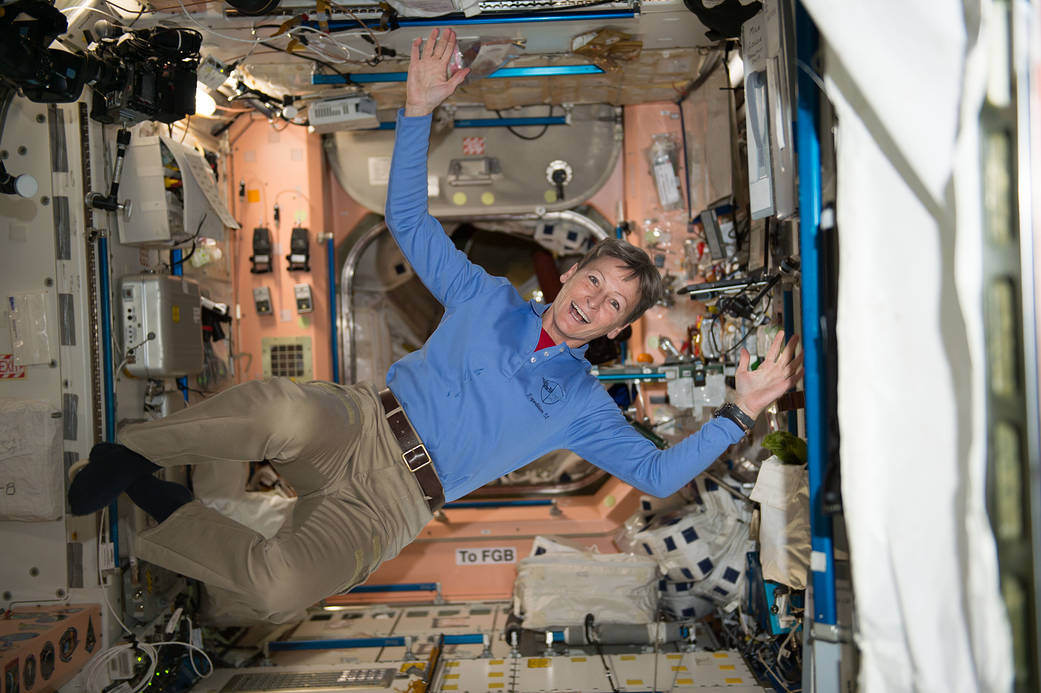Warp drives have a long history of not existing, despite their ubiquitous presence in science fiction. Writer John Campbell first introduced the idea in a science fiction novel called Islands of Space. These days, thanks to Star Trek in particular, the term is very familiar. It’s almost a generic reference for superliminal travel through hyperspace. Whether or not warp drive will ever exist is a physics problem that researchers are still trying to solve, but for now, it’s theoretical.
Continue reading “What if you Flew Your Warp Drive Spaceship into a Black Hole?”DART Did More Than Deter Dimorphos; It Sent It Into a Chaotic Tumble

In 2022, NASA’s DART (Double Asteroid Redirection Test) spacecraft collided with an object named Dimorphos. The objective was to test redirecting hazardous asteroids by deflecting them with an impact. The test was a success, and Dimorphos was measurably affected.
Follow-up research shows that Dimorphos was more than deflected; it was deformed.
Continue reading “DART Did More Than Deter Dimorphos; It Sent It Into a Chaotic Tumble”Is Betelgeuse Actually a Binary Star?

Betel-gurz or Beetle-juice has been a favourite among amateur astronomers for many years. However you pronounce it, its unexpected dimming draw even more attention to this red supergiant variable star in Orion. It has a few cycles of variability, one of them occurs over a 2,170 day period, 5 times longer than its normal pulsation period. A paper has just been published that suggests a companion star of 1.17 solar masses could be the cause. It would need an orbit about 2.43 times the radius of Betelgeuse and it might just lead to the modulation of dust in the region that causes the variations we see.
Continue reading “Is Betelgeuse Actually a Binary Star?”How Can Biofilms Help or Hinder Spaceflight?
As humans spread into the cosmos, we will take a plethora of initially Earth-bound life with us for the ride. Some might be more beneficial or potentially harmful than others. And there is no lifeform more prevalent on Earth than bacteria. These tiny creatures and fungi, their long-lost cousins on the evolutionary tree, have a habit of clumping together to form a type of structure known as a biofilm. Biofilms are ubiquitous in Earth-bound environments and have been noticed on space missions for decades. But what potential dangers do they pose? More interestingly, what possible problems can they solve? A paper from a group of scientists focused on life support systems in the journal Biofilm provides a high-level overview of the state of the science of understanding how biofilms work in space and where it might need to go for us to establish a permanent human presence off-world.
Continue reading “How Can Biofilms Help or Hinder Spaceflight?”Massive Stars Shine in This Ultraviolet View From Hubble

Just outside the Milky Way Galaxy, roughly 210,000 light-years from Earth, there is the dwarf galaxy known as the Small Magellanic Cloud (SMC). Measuring about 18,900 light-years in diameter and containing roughly 3 billion stars, the SMC and its counterpart – the Large Magellanic Cloud (LMC) – orbit the Milky Way as satellite galaxies. Scientists are particularly interested in these satellites because of what they can teach us about star formation and the process where galaxies evolve through mergers, which is something the Milky Way will do with these two galaxies someday.
Another interesting feature of the SMC is the spectacular star cluster known as NGC 346, located near the center of the brightest star-forming region in the SMC, the hydrogen-rich nebula designated N66. Yesterday, NASA released a new image of this star cluster acquired by the venerable Hubble Space Telescope, which provides a unique and breathtaking view of this star cluster. These images were made possible thanks to Hubble’s sharp resolution and unique ability to make sensitive ultraviolet observations.
Continue reading “Massive Stars Shine in This Ultraviolet View From Hubble”Is There a Low-Radiation Path To Europa?

Any mission to Jupiter and its moons must contend with the gas giant’s overwhelming radiation. Only a judicious orbital pattern and onboard protective measures can keep a spacecraft safe. Even then, the powerful radiation dictates a mission’s lifespan.
However, researchers may have found a way to approach at least one of Jupiter’s moons without confronting that radiation.
Continue reading “Is There a Low-Radiation Path To Europa?”How Can Astronauts Avoid Vision Loss from Spaceflight?

Human bodies are sacks of fluids supported by skeletons. The entire human organism has evolved over billions of years on Earth in harmony with the planet’s specific gravity. But when astronauts spend too much time on the ISS in a microgravity environment, the organism responds, the fluids shift, and problems can occur.
One of those problems is with vision, and scientists are working to understand how it happens and what they can do about it.
Continue reading “How Can Astronauts Avoid Vision Loss from Spaceflight?”The Hardest Bias in Astronomy

A nasty sort of bias called Malmquist bias affects almost every astronomical survey, and the only solution is to…keep doing surveys.
Continue reading “The Hardest Bias in Astronomy”NASA Announces the 2025 Human Lander Challenge
One of NASA’s core mission objectives, though not explicitly stated in its charter, is to educate Americans about space exploration, especially students. As part of that mission, NASA hosts a number of challenges every year where teams of students compete to come up with innovative ideas to solve problems. The agency recently announced the next round of one of its standard yearly challenges—the Human Lander Challenge.
Continue reading “NASA Announces the 2025 Human Lander Challenge”NASA Decides to Play it Safe. Wilmore and Williams are Coming Home on a Crew Dragon in February

Astronauts Butch Wilmore and Suni Williams will remain on board the International Space Station until February, returning to Earth on a SpaceX Crew Dragon. NASA announced its decision over the weekend, citing concerns about the safety of the Boeing Starliner capsule due to helium leaks and thruster issues. The troublesome Starliner is slated to undock from the ISS without a crew in early September and attempt to return on autopilot, landing in the New Mexico desert.
NASA said this allows them and Boeing to continue gathering test data on Starliner during its uncrewed flight home, while also not accepting more risk than necessary for the crew.
Continue reading “NASA Decides to Play it Safe. Wilmore and Williams are Coming Home on a Crew Dragon in February”


